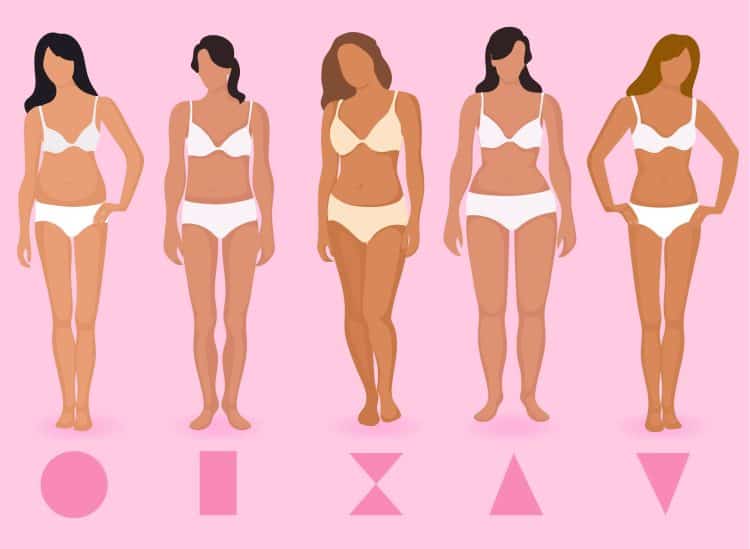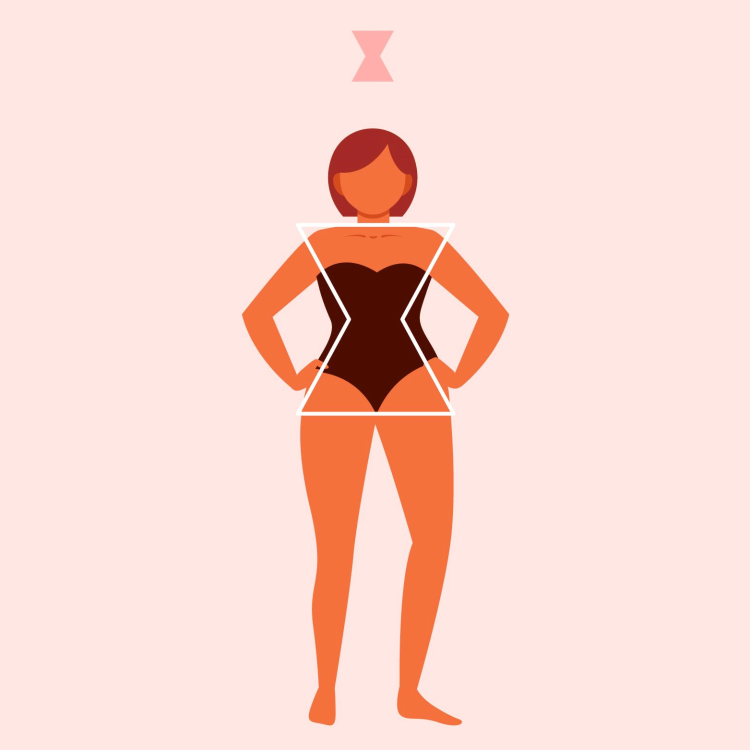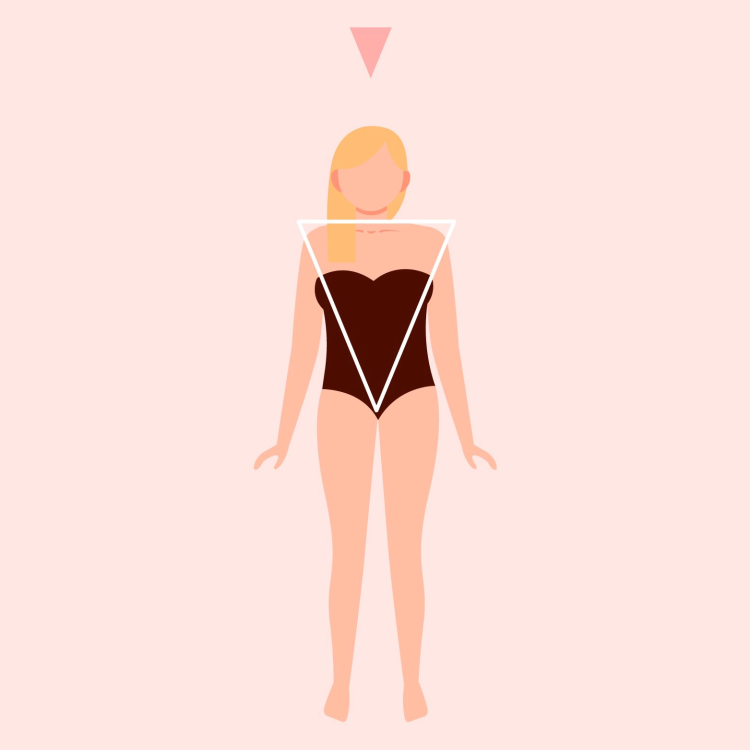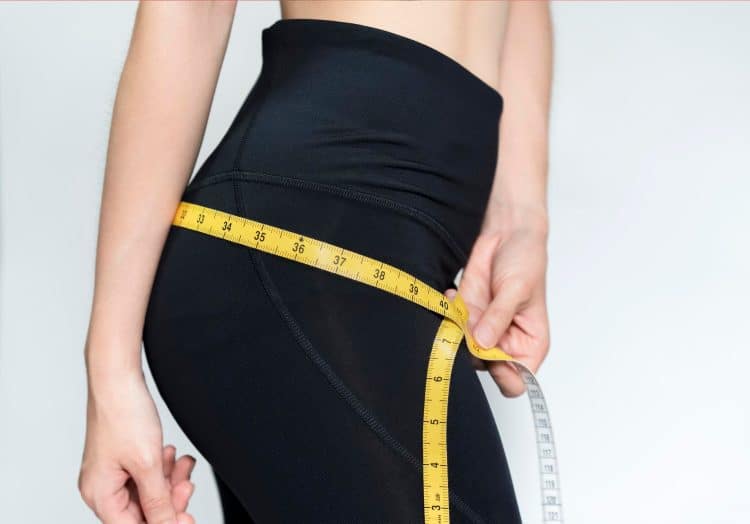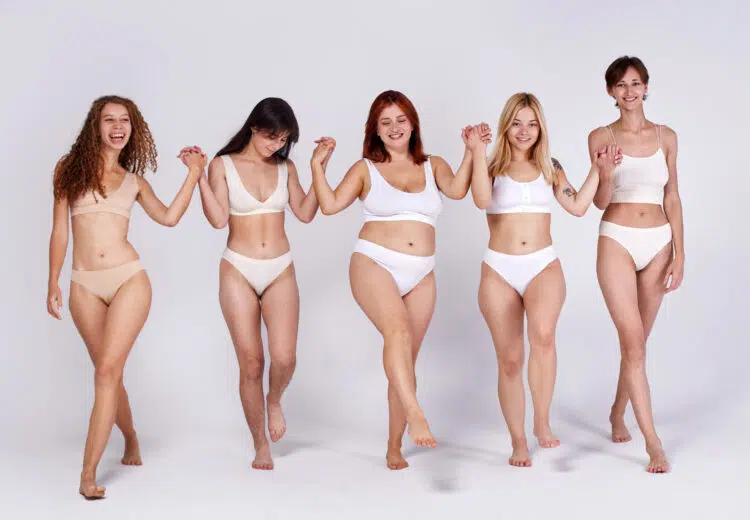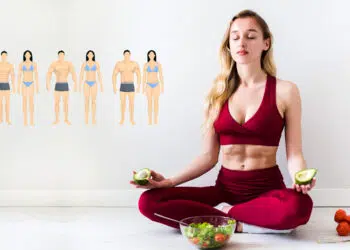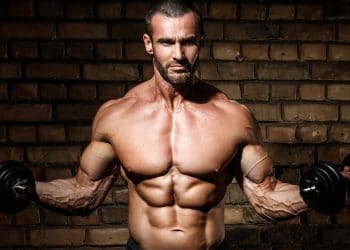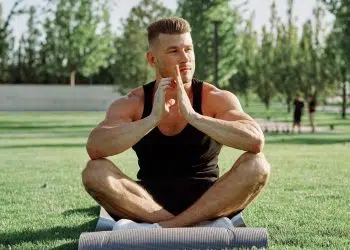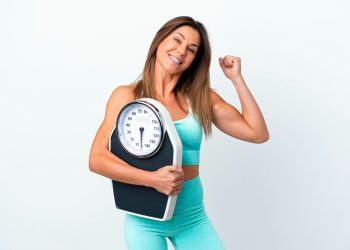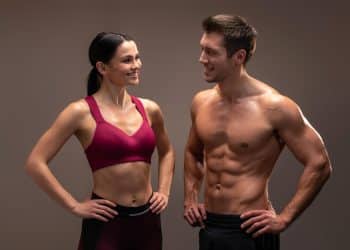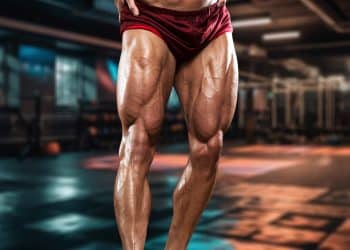Humans come in an incredible variety of shapes, sizes, and proportions—no two bodies are identical. Many cultures and industries, however, have historically elevated one or two body shapes over others, perpetuating narrow beauty ideals. This emphasis can make it challenging to accept our natural figures and celebrate the uniqueness each shape holds. But understanding your body shape can actually be a positive, empowering step. It allows you to highlight your best features, dress in ways that boost confidence, and better tailor your exercise and nutrition strategies.
This comprehensive guide dives into ten of the most common female body shapes. Drawing from my extensive personal training experience and insights from collaborating with experts like Nuala, a nutritionist, we’ll also explore:
- How to identify your shape through accurate measurements.
- Detailed styling tips so you can curate a wardrobe that makes you feel amazing.
- Guidelines on exercise and nutrition best suited for various shapes.
- Addressing frequently asked questions regarding genetics, waist length, and changing your physique over time.
- Embracing body positivity—why it matters and how to stay confident through any stage of life.
By the end of this guide—running well over 4,000 words—you’ll have a deeper understanding of what truly influences shape, how much is in your control, and where to direct your efforts if you want to highlight your figure or pursue physique goals. Let’s get started!
Why Body Shapes Matter—and Why Labels Aren’t Everything
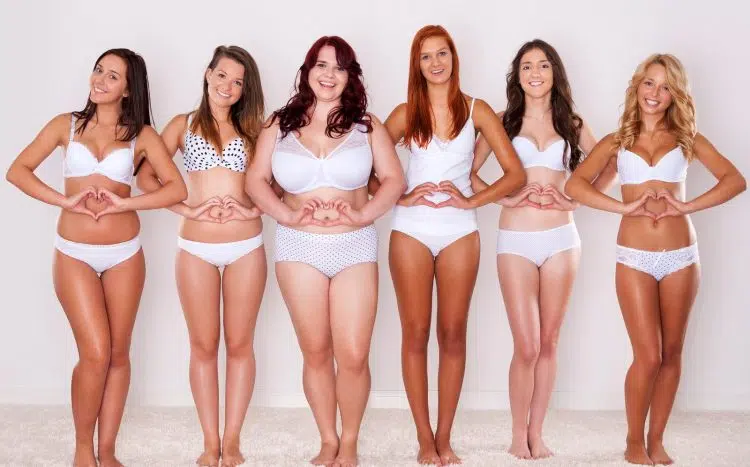
Before we jump into the actual shapes, let’s clarify why classifying your shape can be beneficial—and also why it isn’t the end-all of body image:
- Helpful Starting Point: Categorizing yourself under a particular shape (e.g., hourglass, pear, rectangle) can be a practical way to guide your clothing choices, exercise strategies, and even health screenings. Each shape has common strengths and challenges—knowing these can simplify decisions.
- Understanding Proportions: Some body types naturally store more fat or muscle in certain areas. Shapes also reflect bone structure—like hip width or shoulder breadth. Awareness of these traits helps you focus on what you can (and cannot) change realistically.
- Avoiding One-Size-Fits-All Approaches: A “low-carb diet” might work wonders for a short-waisted apple shape but could prove less effective for a tall rectangle who trains heavily. Similarly, an exercise routine that emphasizes building upper body muscle might be perfect for a pear-shape but not for someone with broad shoulders.
- Confidence & Body Positivity: Body shape categories can be misused—if you start believing one type is superior. But used constructively, identifying your shape empowers you to love your unique proportions and find aesthetic styles that make you feel fabulous.
Ultimately, your shape is just one piece of a far bigger picture that includes health, mental well-being, lifestyle, and personal taste. Recognize these shapes as general guidelines rather than rigid boxes.
The 10 Female Body Shapes—Explained in Detail
Level Up Your Fitness: Join our 💪 strong community in Fitness Volt Newsletter. Get daily inspiration, expert-backed workouts, nutrition tips, the latest in strength sports, and the support you need to reach your goals. Subscribe for free!
While some sources claim there are five basic body shapes (often including hourglass, pear, apple, rectangle, and inverted triangle), there are nuances within these categories, leading us to identify ten distinct shapes. These “sub-shapes” capture more subtle differences in bust-to-waist or waist-to-hip proportions, shoulder alignment, or even torso length.
We’ll start with an overview of each shape—plus styling, exercise, and lifestyle tips—then move on to measurement techniques and frequently asked questions.
1. Hourglass Body Shape
This shape is renowned for balanced proportions, where shoulders and hips align closely, and the waist is narrow. Women with an hourglass figure typically have a fuller bust, defined waist, and curvy hips. If you gain weight, it often distributes evenly or around the hips/thighs, maintaining a naturally curvy physique.
Hallmarks of the Hourglass:
- Shoulders and hips roughly the same width.
- Well-defined waist, typically 8+ inches smaller than hips.
- Bust and hips may be round or full.
Styling Tips:
- Belted and Fitted Silhouettes: Wrap dresses, cinched tops, or high-waisted bottoms accentuate your waist without adding bulk.
- Structured Fabrics: Pieces that skim your form—like cotton blends or jersey knits—maintain shape without clinging excessively.
- Necklines & Sleeves: V-necks or scoop necklines complement a fuller bust. Short, fitted sleeves or sleeveless tops let you showcase defined shoulders.
- Layer Wisely: Tailored blazers or cropped jackets highlight waist definition rather than hiding it.
Exercise and Lifestyle Tips:
- Balanced Workouts: An hourglass shape doesn’t require extreme muscle-building in any particular area. A full-body regimen that includes both strength training (squats, lunges, shoulder presses) and cardio (running, cycling, or dance) can maintain proportion.
- Core Stability: Planks, side planks, and Pilates-based exercises enhance the waistline.
- Moderate Caloric Surplus or Deficit: If you want more shape, a gentle surplus can help build muscle gradually. If you want to trim down, modest caloric restriction combined with consistent activity usually preserves your curves.
2. Pear (Triangle) Body Shape
Synonymous with a bottom-heavy silhouette, the pear or triangle shape usually has narrower shoulders and a smaller bust, with wider hips and thighs. The waist is often well-defined, giving a curvy lower body. Many find their upper body remains lean while their lower body tends to store fat.
Hallmarks of the Pear Shape:
- Hips and thighs noticeably larger than shoulders/bust.
- Waist is usually smaller, and the butt may appear rounded.
- Weight gain typically accumulates in the lower half.
Styling Tips:
- Balance Your Silhouette: Emphasize the upper body with patterned, ruffled, or color-blocked tops. Wide necklines like boat neck or off-shoulder visually broaden shoulders.
- Dark, Minimal Detail on Bottom: Choose darker washes or streamlined cuts for jeans and skirts. A-line or flared skirts skim the hips rather than clinging.
- Structured Jackets & Blazers: Cropped or waist-length jackets with shoulder detailing expand your upper half.
- Accessorize Up Top: Scarves, statement necklaces, or bold earrings bring the eye upward.
Exercise and Lifestyle Tips:
- Upper Body Strengthening: Focus on push-ups, shoulder presses, and row variations to even out proportions and build shoulder definition.
- Lower Body Toning: Squats, lunges, and glute bridges are beneficial, but watch out for intense muscle gains if you don’t want bigger thighs. Aim for higher reps with moderate weight for lean muscle shape.
- Core Engagement: Emphasize core exercises that stabilize your spine and accentuate your waistline.
- Cardiovascular Exercise: Steady-state cardio (brisk walking, stair climbing) can assist with controlling fat accumulation in the hips/thighs.
3. Apple (Inverted Triangle) Body Shape
The apple or inverted triangle shape typically includes a broad shoulder line or full bust relative to the hips. Weight often centers around the midsection, producing a top-heavy look. Legs are commonly slender, and if you gain weight, much of it goes to the belly area.
Hallmarks of the Apple Shape:
- Broad shoulders or chest compared to hips.
- Less distinction between bust and waist, with possible fullness in the midsection.
- Slender arms and legs.
Styling Tips:
- Accentuate Lower Body: Show off slim legs with skinny jeans, shorter skirts, or fitted trousers.
- Skim Over the Midsection: A-line dresses, empire waists, and tunics that gently flow away from the waist are flattering.
- Strategic Necklines: V-necks and scoop necks elongate your torso and balance a fuller bust.
- Layering with Care: Structured blazers (left unbuttoned) or cardigans help disguise the midsection without clinging.
Exercise and Lifestyle Tips:
- Core & Midsection: While no exercise specifically “spots reduces,” strengthening the core (planks, side planks, stability ball crunches) helps with posture and can tighten your mid-torso.
- HIIT Cardio: High-intensity interval training can be particularly useful for fat loss around the belly, improving insulin sensitivity.
- Lower Body Emphasis: Squats, lunges, and glute exercises can develop shapelier legs, balancing the upper half.
- Mindful Nutrition: Apple shapes sometimes struggle with blood sugar fluctuations. Prioritize balanced meals, limiting refined carbs to manage midsection weight gain.
4. Rectangle (Banana) Body Shape
The rectangle or banana shape is often described as straight: shoulders, bust, waist, and hips have minimal difference in measurement. While it might lack the “hourglass” curves, this shape can appear lean and athletic, especially if the individual has toned arms or legs.
Hallmarks of the Rectangle Shape:
- Shoulders, waist, and hips roughly aligned.
- Modest to small bust, or balanced bust/hips with minimal waist definition.
- Gains weight uniformly across the body.
Styling Tips:
- Create a Curvier Illusion: Add volume around shoulders (ruffled tops) or hips (pleated skirts). Belts or wrap dresses define your waist more.
- Explore Necklines: Boat necks, sweetheart necklines, or V-necks can frame your chest, adding visual curvature.
- Play with Patterns & Color-Blocking: Diagonal stripes or bold color breaks can “carve out” a defined waist visually.
- Layering: Cardigans, vests, or blazers with cinched or belted waists instantly add shape.
Exercise and Lifestyle Tips:
- Emphasize Curves: Incorporate glute exercises (hip thrusts, glute bridges) and shoulder exercises (lateral raises) to widen the upper/lower body relative to the waist.
- Define the Waist: Planks, side planks, cable woodchoppers, or Pilates can help sculpt your midsection.
- Calorie Control: If you want more muscle, consider a controlled calorie surplus with adequate protein intake.
5. Athletic Body Shape
Women with an athletic shape tend to have a broader back and shoulders, a tapered waist, and toned legs. Muscular definition is often visible in the arms, shoulders, thighs, or calves. The waist might be fairly narrow, though not always as starkly as in an hourglass.
Hallmarks of the Athletic Shape:
- Lean and relatively muscular build, with some angular lines.
- Often broad shoulders and back.
- Hips in alignment with or slightly narrower than the shoulders.
Styling Tips:
- Emphasize the Waist: Belts or cinched silhouettes enhance curves. Avoid overly baggy pieces that hide your athletic form.
- Play with Feminine Detailing: Ruffles, lace, or drapery can add softness if you want a more feminine vibe.
- Necklines & Sleeves: Sweetheart necklines, tank tops, and strapless styles can show off shapely shoulders.
- Choose Structured Fabrics: Good-quality denim or cotton-blends complement toned limbs. Stretchy materials can also show off muscle definition.
Exercise and Lifestyle Tips:
- Balanced Regimens: Since you likely have a good muscle base, continue mixing functional strength moves (deadlifts, overhead presses) with agility or flexibility sessions (yoga, Pilates) to avoid injuries.
- Cardio as Needed: If you want to keep body fat in check, incorporate moderate to high-intensity cardio without overdoing it, preserving your muscle mass.
- Progressive Overload: You might respond well to heavier lifting, but watch out for overdeveloping certain areas if you aim to maintain a balanced physique.
6. Inverted Triangle Body Shape
This inverted triangle shape is a variation of the “apple” or rectangle. Often, the shoulders are wide, and the bust is proportionally larger than the hips. The waist is smaller, with hips that may look slim or straight in comparison to the upper body.
Hallmarks of the Inverted Triangle:
- Broad shoulders or a substantial bust compared to narrow hips and thighs.
- Midsection can be defined but not always; it depends on overall body composition.
- Legs are typically leaner.
Styling Tips:
- Accentuate the Lower Half: Flared pants, skirts with volume, bright or patterned bottoms help balance out broader shoulders.
- Focus on Neck & Collar: V-neck or scoop necklines elongate your upper body. Avoid boat necks that widen the shoulders further.
- Structured Jackets: Blazers with a defined waist can draw attention toward your midsection rather than your shoulders.
- Dark, Simple Tops: Minimizing visual details on the upper body helps your hips appear more prominent in proportion.
Exercise and Lifestyle Tips:
- Lower Body Work: Squats, lunges, glute-focused moves can add volume to your hips and legs, balancing your silhouette.
- Moderate Upper Body Training: Light to moderate chest/shoulder exercises maintain strength without overly broadening shoulders.
- Core Strengthening: Keep the waist and lower back strong to support your posture.
7. Oval Body Shape
The oval body shape is characterized by a round midsection, typically combined with relatively slender limbs. Shoulders and hips can be close in width, but the waistline appears less defined, giving an “O” or circular appearance through the torso.
Hallmarks of the Oval Shape:
- Full midsection with minimal waistline.
- Bust can be substantial, matching or exceeding the hips.
- Arms and legs often appear slim.
Styling Tips:
- A-line & Empire Waists: Gently skim over the belly for a streamlined look.
- Use Layers Strategically: Cardigans or jackets worn open add vertical lines, visually lengthening your frame.
- Emphasize Legs: Shorter skirts or slim-fit pants show off your lean limbs, shifting attention away from your torso.
- Dark, Solid Colors: Minimizing busy patterns around the midriff can create a more balanced look.
Exercise and Lifestyle Tips:
- Core & Posture Focus: Gentle but consistent core training (planks, supine leg raises, pelvic tilts) helps maintain or carve out some waist definition.
- Cardio for Weight Management: Walking, cycling, swimming—done regularly—helps manage weight if that’s a goal.
- Strength Training for Limbs: Toning arms and legs (e.g., bicep curls, squats) can underscore your naturally slender limbs.
8. Diamond Body Shape
The diamond shape is another variant of the oval or apple, typically featuring more weight in the belly region. Shoulders may be narrower than the hips, and the bust can be proportionally smaller or equal to the hips. The waist is high, and the butt may look flatter or smaller relative to the stomach area.
Hallmarks of the Diamond:
- Midsection carries the most weight, giving a “diamond” silhouette.
- Hips can appear broader than shoulders, but the waist is not well-defined.
- Arms and legs might be trim or average.
Styling Tips:
- A-line & Vertical Lines: Dresses and skirts that flare gently from the waist downward. Vertical stripes or seams create length.
- Open Necklines: V-necks and scoop necks draw the eye up and lengthen the torso.
- Structured Tops: Choose fabrics with enough body to hold shape around your midsection.
- Under-bust Details: Empire waist dresses can highlight the slimmest part of your ribcage, diverting attention from the tummy.
Exercise and Lifestyle Tips:
- Gentle Core Work: Focus on safe, controlled exercises (modified plank, partial crunches) that support and strengthen abdominals without straining your back.
- Regular Walking or Low-Impact Cardio: Great for fat-burning and metabolic health, gradually lessening midsection adipose tissue.
- Resistance Training for Shoulders & Glutes: Lateral raises, donkey kicks, or hip thrusts can create a more balanced physique by building definition above or below the waist.
9. Top Hourglass Body Shape
The top hourglass shape mirrors a standard hourglass but with a slightly larger bust compared to hips. The waist is still defined, yet the bust measurement outstrips hips by an inch or more.
Hallmarks of the Top Hourglass:
- Bust larger than hips, but both remain curvy.
- Waist smaller than bust/hips, giving an hourglass base.
- Weight gain might appear around the chest or midsection, but hips remain smaller than the bust.
Styling Tips:
- Wrap & Peplum Tops: Cinched designs highlight the waist without overemphasizing a full bust.
- Open Necklines: V-necks or sweetheart cuts showcase the bust tastefully while elongating the upper body.
- Balanced Bottoms: A-line or flared skirts help align the lower half with the bust size.
- Structured Fabrics: Ensure you have enough support up top—invest in a well-fitted bra that complements your clothing choices.
Exercise and Lifestyle Tips:
- Upper Body Strength: If you prefer not to enlarge your shoulders further, moderate your shoulder and chest exercises, focusing more on form and stability.
- Lower Body Building: Try glute- and thigh-focused workouts (lunges, step-ups) to create a better hip-to-bust ratio if desired.
- Core Training: Keep your waist defined with planks, side bends, or ab routines that emphasize obliques.
10. Bottom Hourglass Body Shape
The bottom hourglass shape similarly maintains a defined waist, but the hips surpass the bust, creating a subtly different proportion than the classic hourglass. Weight accumulates more around the lower half—thighs, buttocks—compared to the upper body.
Hallmarks of the Bottom Hourglass:
- Hips are wider than the bust, yet both remain curvy.
- Waist is markedly smaller, highlighting the “hourglass” effect.
- Thighs, buttocks hold more fat or muscle than the upper torso.
Styling Tips:
- Highlight the Waist: Belts, wrap dresses, and high-waisted garments show off the slim midsection.
- Structured Tops: Ruffles, wide necklines, or layered details bring balance to a smaller bust.
- Choose Flared Bottoms: A-line skirts or wide-legged pants flow nicely over fuller hips.
- Striking Necklaces or Earrings: Focus the eye upward, creating visual harmony with your curvaceous lower half.
Exercise and Lifestyle Tips:
- Upper Body Strength & Muscle Building: Shoulder presses, push-ups, and lat work can help match your strong hips.
- Lower Body Toning: If you prefer not to enlarge your hips further, focus on moderate weights, slightly higher rep ranges for glute and thigh exercises.
- Cardiovascular Balance: Interval training or moderate cardio helps keep body fat in check, particularly in the lower half.
Female Body Shapes Summary Chart
Body shape is an amalgamation of bone structure, fat distribution, muscle mass, and sometimes posture. Identifying shape may feel complicated if you see overlapping traits, which is normal. Here’s a simplified breakdown of the main differences, focusing on bust, waist, and hips, as well as a mention of shoulders where relevant.
Use this table as a quick reference, but remember these categories are broad: individuals often have hybrid or partial shapes.
| Body Shape | Bust/Shoulders | Waist | Hips |
| Hourglass | Equal to or slightly larger than hips | Markedly smaller | Equal to or slightly larger than bust |
| Pear/Triangle | Smaller | Smaller than bust, typically defined | Larger than bust/shoulders |
| Apple/Inverted Triangle | Wider shoulders, bigger bust | Less defined, may carry weight here | Narrower than shoulders |
| Rectangle | About the same as hips | Similar to shoulders/hips | About the same as shoulders |
| Athletic | Broad or well-developed, muscular | Lean, narrow | Often narrower but toned |
| Inverted Triangle Variant | Larger bust vs. hips | Often smaller than bust | Smaller, more streamlined |
| Oval | Close to or larger than hips | Rounded, bigger than bust | Close to shoulders in measurement |
| Diamond | Equal or slightly larger than hips, narrow shoulders | Less defined, fullness in stomach area | Equal or slightly bigger than bust |
| Top Hourglass | Slightly larger bust vs. hips | Narrow, well-defined | Curvy, but smaller than bust |
| Bottom Hourglass | Smaller bust vs. hips | Well-defined waist | Wider hips, curvy lower body |
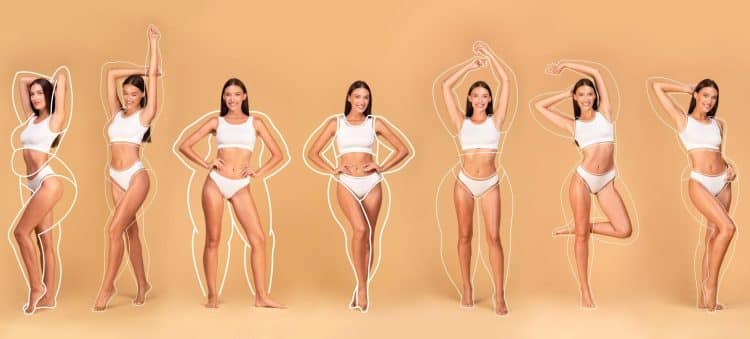
How to Use Body Measurements to Determine Your Body Shape
While general descriptions might be enough for some, others prefer a numeric approach. After all, the simplest path to clarity is measuring your:
Level Up Your Fitness: Join our 💪 strong community in Fitness Volt Newsletter. Get daily inspiration, expert-backed workouts, nutrition tips, the latest in strength sports, and the support you need to reach your goals. Subscribe for free!
- Shoulders
- Bust
- Waist
- Hips
Shoulders: Measure around the top of your shoulders, ensuring the tape doesn’t slope up or down.
Bust: Wrap the tape around the fullest part of your chest, typically across the nipples.
Waist: Measure at the narrowest point, often near or just above the belly button.
Hips: Measure the widest part, often around the butt.
Compare each measurement. Are the hips significantly larger than the bust? Are shoulders broader than hips? Does the waist measure 8+ inches smaller than hips and bust? These comparisons typically reveal your shape.
Are You Long- or Short-Waisted?
Knowing if you’re long- or short-waisted refines how you style your torso. A short waist might benefit from extended waistlines to elongate your torso, while a long waist may look great in high-waisted pants or wide belts. Try the quick hand-stacking test described earlier or compare the distance between your ribs and hips to see if you are short-, medium-, or long-waisted.
Body Positivity and Embracing Your Shape
While this article focuses heavily on classification and how to optimize (via clothing, exercise) for your shape, it’s equally vital to practice body positivity and self-love:
- Acknowledge Genetic Factors: Some shapes are baked into your DNA. Instead of fighting it, celebrate the uniqueness and find solutions that work for you.
- Focus on Health Markers: Blood pressure, sleep quality, emotional well-being—these often matter far more than dress size or waist-to-hip ratio.
- Avoid Comparison: Social media’s curated images can warp perceptions. Real bodies have lumps, bumps, and quirks that rarely appear on filtered feeds. Cherish your own journey.
- Fuel Your Body: Good nutrition supports energy and a balanced physique. Restrictive or fad diets can undermine metabolic health and trigger negative relationships with food.
- Dress for Joy: Yes, body shape knowledge can help you pick outfits—but don’t let “rules” overshadow your personal style or comfort. Confidence transcends any silhouette guideline.
Ultimately, the goal is to appreciate your body while making lifestyle choices that foster longevity, resilience, and a fulfilling sense of well-being.
Understanding Waist Length: Long-Waisted vs. Short-Waisted
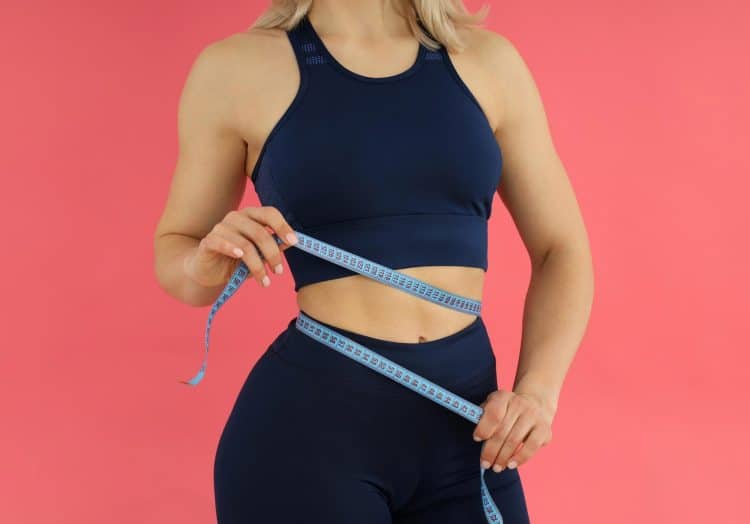
Your waist length can also affect your overall silhouette and how clothes sit on your body. Being long-waisted means your waist appears lower on your torso, leaving a more extended space between your bust and hips. Conversely, being short-waisted places the waist higher, sometimes just under the bust line, making it feel like there’s “less torso” above your hips. Neither is “better”; they’re just different proportions you can work with:
- Short-Waisted: Lightly cropped tops, empire waists, or high-waisted bottoms can visually elongate your torso.
- Long-Waisted: High-rise pants and belts at the natural waist help maintain balance; consider layering to break up the vertical space.
Extra Clothing Hacks by Body Shape
As an added bonus, here’s a short style cheat sheet for each shape, with extra suggestions beyond the typical pointers:
- Hourglass:
- Emphasize the waist with wrap blouses or wide belts.
- Try pencil skirts that hug your hips—balanced with a modest or fitted top.
- Avoid boxy jackets that mask your waist; opt for princess seams that contour your figure.
- Pear/Triangle:
- “Cold shoulder” tops or anything with sleeves detailing bring interest upward.
- Consider structured fabrics around hips (like thicker cotton or twill) to smooth lumps.
- A-line dresses or wrap skirts highlight your smaller waist while flowing over hips.
- Apple/Inverted Triangle:
- Dresses that gather under the bust line can add definition just under the chest if your waist is less defined.
- Avoid overly tight waistbands; comfort ensures you don’t highlight the midsection bulge.
- Looser, flared bottoms can balance out narrower hips.
- Rectangle:
- Curved hemlines on tops add softness to a straighter frame.
- Peplum tops or ruffles at the hips create the illusion of more curve.
- Choose skirts and pants that define or shape the butt (like slight pleats or pockets).
- Athletic:
- Bodycon dresses can display your toned shape. Don’t be scared to flaunt it!
- Cut-out dresses or tops at the waist can highlight an already chiseled midsection.
- Mixing sporty pieces (like bomber jackets) with feminine touches (skater skirts) can be fun and balanced.
Tips on Exercising and Dieting for Each Shape
Below is a more detailed breakdown of exercise and dietary focuses for each shape, especially useful if you want slight modifications—like a smaller waist, more glutes, or broader shoulders. Remember: improving strength, function, and health are excellent goals, regardless of shape.
- Hourglass:
- Workout Focus: Balanced full-body routines emphasizing symmetrical muscle development. Weighted squats and lunges keep lower body toned; overhead presses maintain shoulder definition without overemphasizing shoulders.
- Diet Tip: Watch out for excessive calorie surplus if you want to maintain a defined waist; moderate carb and protein intake helps support muscle while limiting fat gain.
- Pear/Triangle:
- Workout Focus: Hit upper-body moves—pull-ups, push-ups, dumbbell chest press—to accentuate shoulders. For the lower body, opt for moderate weights/higher reps if you prefer not to add substantial size to hips/thighs.
- Diet Tip: Balanced macros with slightly lower carbohydrate intake if you store fat in hips easily. Regular fiber intake helps keep you satiated, preventing over-eating.
- Apple/Inverted Triangle:
- Workout Focus: Toning and strengthening the lower body with hip thrusts, step-ups. Target core stability to maintain posture. Gentle cardio for steady fat burn around the midsection.
- Diet Tip: Consider smaller, more frequent meals to avoid big insulin spikes. Emphasize nutrient-dense foods, lean proteins, veggies, and moderate healthy fats.
- Rectangle:
- Workout Focus: Focus on shaping shoulders (lateral raises) and glutes (hip bridges) to carve out curves. Weighted squats and lunges help round the lower body.
- Diet Tip: If you want to build curves, aim for a mild caloric surplus with consistent protein (1.0–1.2 g/lb of body weight) plus targeted muscle-building workouts.
- Athletic:
- Workout Focus: Often prefer full-body strength routines, with periodic emphasis on areas you’d like to contour more (like glutes or arms). Maintain mobility to avoid stiffness.
- Diet Tip: Slight calorie maintenance or surplus can keep energy high for intense workouts, ensuring lean, athletic lines stay defined.
- Inverted Triangle Variant:
- Workout Focus: Prioritize squats, lunges, glute exercises for stronger lower body. Keep upper-body training moderate to preserve balanced proportions.
- Diet Tip: Enough protein to support muscle, but watch total calorie intake if you’re prone to upper body fat storage. Manage carbs around workouts for stable energy.
- Oval/Diamond:
- Workout Focus: Emphasis on gentle to moderate cardio (walking, elliptical) plus safe strength exercises that don’t strain the lower back. Light upper- and lower-body strength training can help with posture.
- Diet Tip: Focus on nutrient-dense meals (lean proteins, vegetables, whole grains). Avoid crash diets, as these body shapes may be more sensitive to large caloric deficits, leading to binging or metabolic slowdown.
- Top Hourglass/Bottom Hourglass:
- Workout Focus: Balanced routine, focusing on sculpting whichever region (bust or hips) you want to moderate or enhance. If you’re top-heavy, you might do more lower-body moves; if bottom-heavy, extra upper-body training.
- Diet Tip: Keep macros balanced. Enough protein for muscle maintenance, healthy carbs for workout fuel, and good fats for hormone health (especially for bust or butt shape concerns).
Is There a “Best” or “Ideal” Female Body Shape?
Beauty standards have varied vastly across eras and cultures. In the Western world, the hourglass shape is often revered. Yet in certain cultures, a fuller, pear-like figure is appreciated. Some subcultures, like athletic or fitness communities, celebrate the rectangle or athletic shape for its lean lines. Ultimately, there’s no single best or universally ideal shape. Health professionals typically emphasize balanced body composition, stable hormones, and good metabolic markers over aesthetics alone.
Prioritize a shape where you feel confident, energetic, and capable. If that means building stronger shoulders to offset wide hips, go for it. If you love your curves and want to maintain them, choose a diet and workout plan that sustains healthy body fat levels. The “perfect shape” is a personal journey of self-care, acceptance, and mindful adjustments rather than universal conformity.
How Shifts in Hormones and Life Stages Affect Body Shape
It’s important to note that women’s shapes don’t remain static throughout life. Here are some typical shifts:
- Puberty: Increases in estrogen can widen hips, develop breasts, and initiate fat deposition around the thighs.
- Pregnancy: Weight gain in breasts, belly, hips is normal and sometimes remains postpartum. Hormonal fluctuations can shift overall shape, making the lower body heavier or expanding the ribcage.
- Menopause: Estrogen levels drop, leading many women to experience increased belly fat or a shift from pear/hourglass to apple distribution. Muscle mass also tends to decrease with age, requiring more attentive strength training and protein intake to maintain tone.
- General Aging: With time, connective tissues can lose elasticity, and metabolism may slow. Without consistent exercise and mindful nutrition, muscle can diminish, affecting how your shape appears.
Adapting your fitness routine and dietary habits during these transitions helps you preserve strength, manage body fat, and maintain a shape that aligns with your health goals.
Body Shape, Self-Expression, and Self-Love
Fashion, exercise, and diet are means to celebrate your body shape rather than battle it. Some final thoughts:
- Self-Compassion: Embrace the uniqueness of your shape. Harsh self-criticism over unchangeable features can erode confidence and mental health.
- Express Your Personality: Clothing choices offer an artistic outlet. If you’re a flamboyant hourglass, don bright, curve-hugging prints. A minimalist rectangle might favor sleek lines. Style becomes a reflection of who you are.
- Exercise for Joy and Health: Instead of fixating on aesthetic flaws, focus on functional improvements—like lifting heavier weights, running a faster mile, or having more stamina in daily life. These achievements often lead to positive changes in shape as a byproduct.
- Consult Experts: If you have specific aesthetic or health targets, consider seeking a personal trainer or nutritionist who can personalize strategies to your shape and lifestyle.
Above all, remember that every shape has its advantages—some are more suited to certain physical endeavors or style aesthetics. The key is to find what resonates with you and ensures your well-being.
FAQs about Female Body Shapes
1. What main factors determine a woman’s body shape?
Bone structure is foundational: the width of your pelvis, shoulders, and ribcage sets a default “frame.” On top of that, genetics dictates fat distribution patterns—some women store more around the hips or waist. Hormones like estrogen and progesterone also steer body fat deposition. Finally, lifestyle factors, exercise routines, and diet can alter muscle-to-fat ratios, subtly shifting how your shape appears over time.
2. Can I really change my body shape if I don’t like it?
You can modify aspects—like building muscles in narrower areas (shoulders, butt) or losing fat to define your waist. But your core bone structure remains static. So while you may transform a “soft pear” into a more “toned pear,” you can’t fully morph a pear shape into an hourglass if your natural skeleton and genetics lean pear. Focus on realistic goals, such as reducing body fat, building muscle in your shoulders or glutes, or emphasizing certain curves with styling.
3. What if I’m in between two or more shapes?
Many women see themselves in multiple descriptions; that’s normal. For instance, your shoulders may be a bit wider than your hips, yet you have an identifiable waist. No classification is absolute, so use whichever shape’s guidelines most closely align with your measurements and goals. Adapt them to your unique proportions and preferences.
4. Are certain body shapes healthier than others?
Health extends beyond shape alone. While apple-shaped individuals often carry abdominal (visceral) fat, raising risk factors like insulin resistance, a pear shape can also be prone to storing excess weight in the hips, which might stress the knees or cause hormonal imbalances. Good health is more about body composition, stable weight management, active living, balanced nutrition, and mental well-being than any shape classification.
5. Do body shapes change with age or life events like pregnancy?
Yes. Hormonal changes (e.g., menopause), pregnancy, weight fluctuations, and even certain medications can redistribute your body fat and muscle mass. Many women experience a shift from a pear toward an apple shape after menopause due to dropping estrogen levels. Nonetheless, lifestyle interventions—exercise, mindful eating—help maintain a healthy shape and mitigate drastic changes.
6. Should I choose specific exercises for each body shape?
While general full-body routines are beneficial for everyone, you can selectively emphasize or de-emphasize muscle groups. For instance:
- Pear/Triangle: Extra shoulder and back work to broaden the upper body.
- Apple/Inverted Triangle: Lower body exercises for shaping hips and thighs, plus core stability.
- Rectangle: Focus on building glutes or shoulders to create subtle curves.
- Hourglass: Balanced approach with core strengthening to preserve that iconic waist.
Conclusion
Women’s bodies are a tapestry of shapes—hourglass, pear, apple, rectangle, athletic, and beyond. Identifying your shape is a stepping stone, not a verdict. It can steer you toward clothes that make you feel confident, direct your fitness plan to either balance or enhance certain areas, and provide clarity on nutrition. Yet it’s just one dimension of a holistic journey encompassing physical health, mental wellness, lifestyle, and body positivity.
Whether you’re a bottom hourglass wanting to even out your silhouette, an athletic rectangle striving for more curves, or an apple shape aiming to define your waist—small yet deliberate changes to exercise, eating habits, and wardrobe selections can help you realize a shape that’s both healthy and authentic to you. And as life shifts—through puberty, pregnancy, menopause—knowing these shape fundamentals allows you to adapt gracefully.
In the end, loving your body goes beyond measurements and categories. It’s about celebrating your individuality, fueling your body with nutritious foods, moving in ways that energize you, and dressing in a style that sparks joy. Knowledge of your shape is a powerful tool, but your ultimate goal should always be improved well-being, boosted self-esteem, and the freedom to express your unique beauty every day. Embrace your shape—and embrace your best self.

